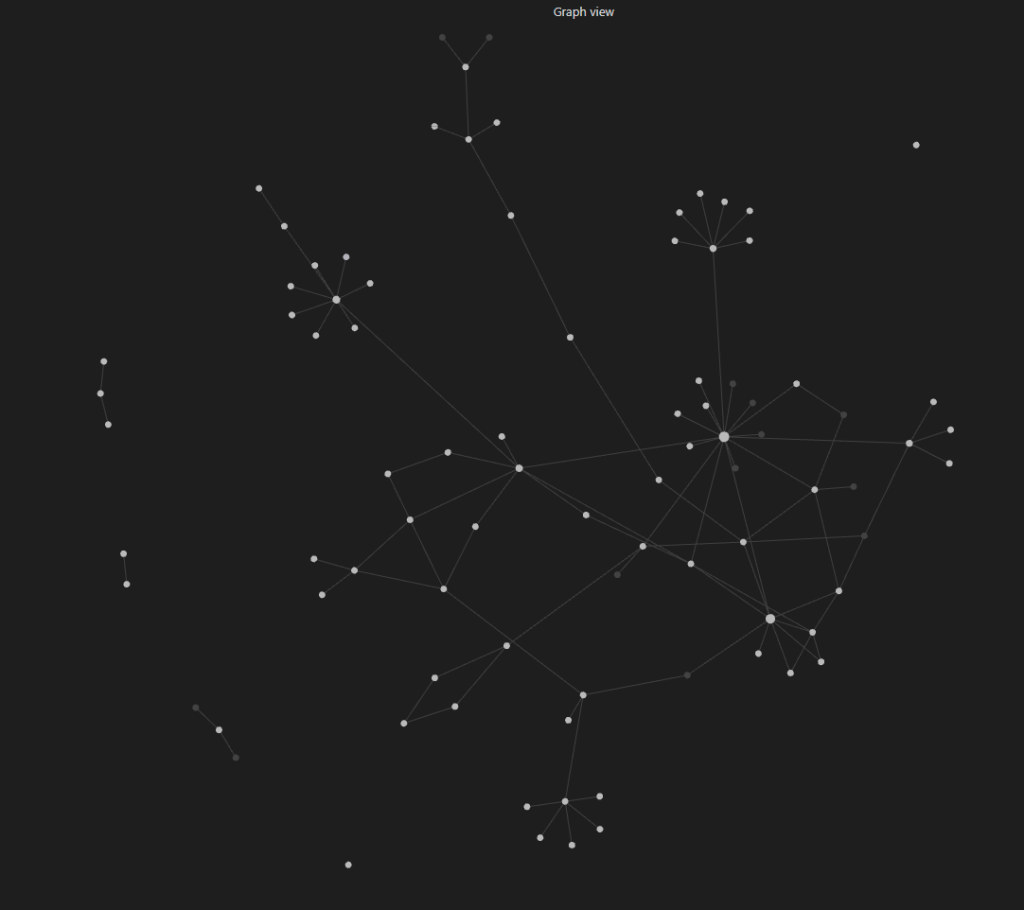January and the start of February also brought on a look at better brain dumping knowledge from inside my head, into something tangible. Sort of a legacy thing, I think.
Obsidian has been a note taking app that’s based around the markdown plaintext format that’s been around for years. A lot of my friends with a hyper technical background have been huge advocates of Obsidian and in an effort to find something that’ll let me brain dump with an intelligent linking method that is code friendly — Obsidian came up time and time again.

This blog post is generally just me rationalizing why I’m switching to it, over the two existing services I use (and pay for) – Notion and Clickup – both of which are fantastic apps for people who need something a little more fancy. But up front, I think it’s best to talk about the cost of these apps. Both of these apps are wonderful; they cost money however, at $5 USD and $12 USD respectively, and this adds up to a little over $200 USD per year. More than one might think to affect one’s finances in these trying times!
And so…! In a bid to move towards reducing my overheads, I thought I’d look into DIY solutions that I can integrate or piggy back on more critical services. In this case, Obsidian – which can use iCloud Drive to store itself works well. iCloud isn’t a service I can easily get rid of – my mobile phone, my tablet are both rooted deep in the Apple ecosystem, as there’s health related devices and apps that are better on iOS than in Android or Windows for my situation (your mileage may vary of course). Lucky for me though, that this is still usable across Windows – meaning I technically don’t need to worry about something like the paid Obsidian Sync service.
Security is also another thing I find myself concerned a little bit about. There’s not much I can do about state level bad actors gaining access to my data (and I don’t think anyone’d find use for it) – but your typical cyber criminal is still a concern because they’re on an interpersonal level. Last thing I need is sensitive data (like health records) getting compromised and having them leveraged against me. But to make things worse, it turns out that Notion isn’t encrypted on any level – which kind of explains why it’s so easy to publish something directly to the web.
Scary.
Clickup is also web based and doesn’t do much better. I feel like Notion and Clickup don’t have the resources to build privacy on a level that Apple does with its iCloud services. Having been subject to some very public breaches of customers data (not Apple’s fault – they got socially engineered) – Apple has no doubt more than doubled down to make sure it never gets the blame for any cyber security breaches.
So, all in all – I’ve moved to Obsidian and as of the time of this post, it’s been almost 2 weeks. So far I’ve started to slowly port across the knowledge dumped in Notion into it. It’s a long, slow and tedious process, but the beauty of the way Obsidian draws links between articles (Wiki-esque) means that I don’t have duplicate style documents, unless I make them forcibly within the file structure of the Vault itself.
It’s also nice that I can write SQL-esque “Dataview” queries that can generate lists of pages within things. It feels a lot more like a programmer’s knowledge assistant than a “Note taking” application.
It feels natural using Obsidian now, and I keep improving how I use it as I go along, it’s still got that shiny new “Learning new hacks all the time” feel to a new application.
It feels like The Right Move™